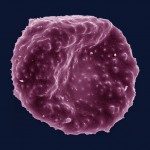Link to Pubmed [PMID] – 16972228
Hum. Mutat. 2007 Jan;28(1):33-40
Aldosterone plays a key role in electrolyte balance and blood pressure regulation. Type 1 pseudohypoaldosteronism (PHA1) is a primary form of mineralocorticoid resistance characterized in the newborn by salt wasting, hyperkalemia, and failure to thrive. Inactivating mutations of the mineralocorticoid receptor (MR; NR3C2) are responsible for autosomal dominant and some sporadic cases of PHA1. The question as to whether other genes may be involved in the disease is of major importance because of the potential life-threatening character of the disease, the potential cardiovascular effects of compensatory aldosterone excess, and the role of the mineralocorticoid system in human hypertension. We present the first comprehensive study seeking nucleotide substitutions in coding regions, intron-exon junctions, and untranslated exons, as well as for large deletions. A total of 22 MR gene abnormalities were found in 33 patients. We demonstrate that MR mutations are extremely frequent in PHA1 patients classified according to aldosterone and potassium levels and give indications for accurate clinical and biological investigation. In our study the possibility of a genocopy exists in three PHA1 kindreds. The other patients without MR mutations might have different diseases resembling to PHA1 in the neonatal period, which could be identified by extensive clinical and functional exploration.
